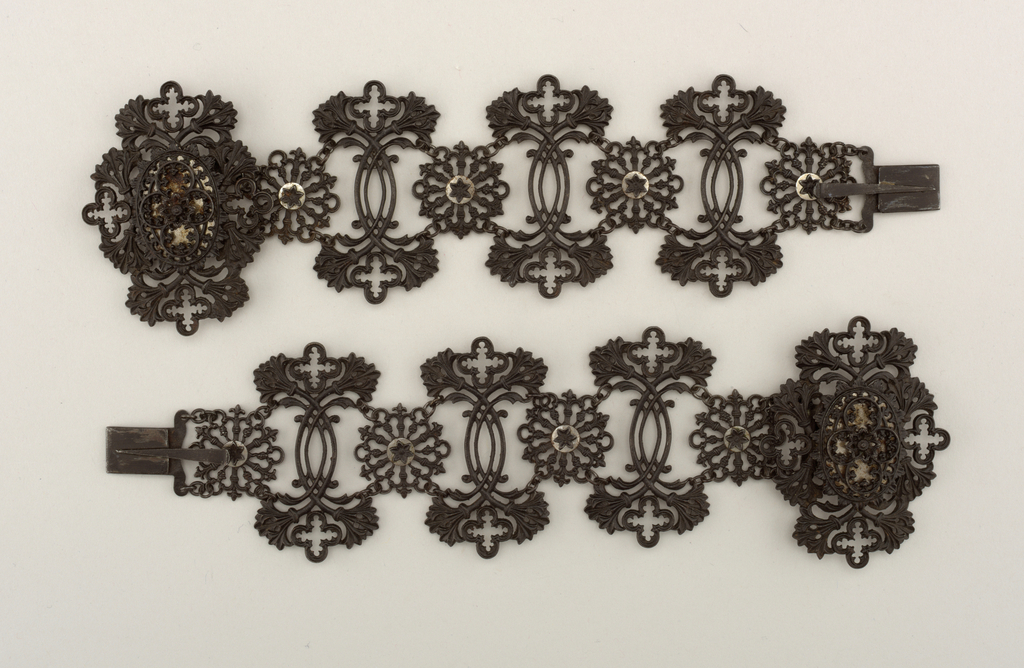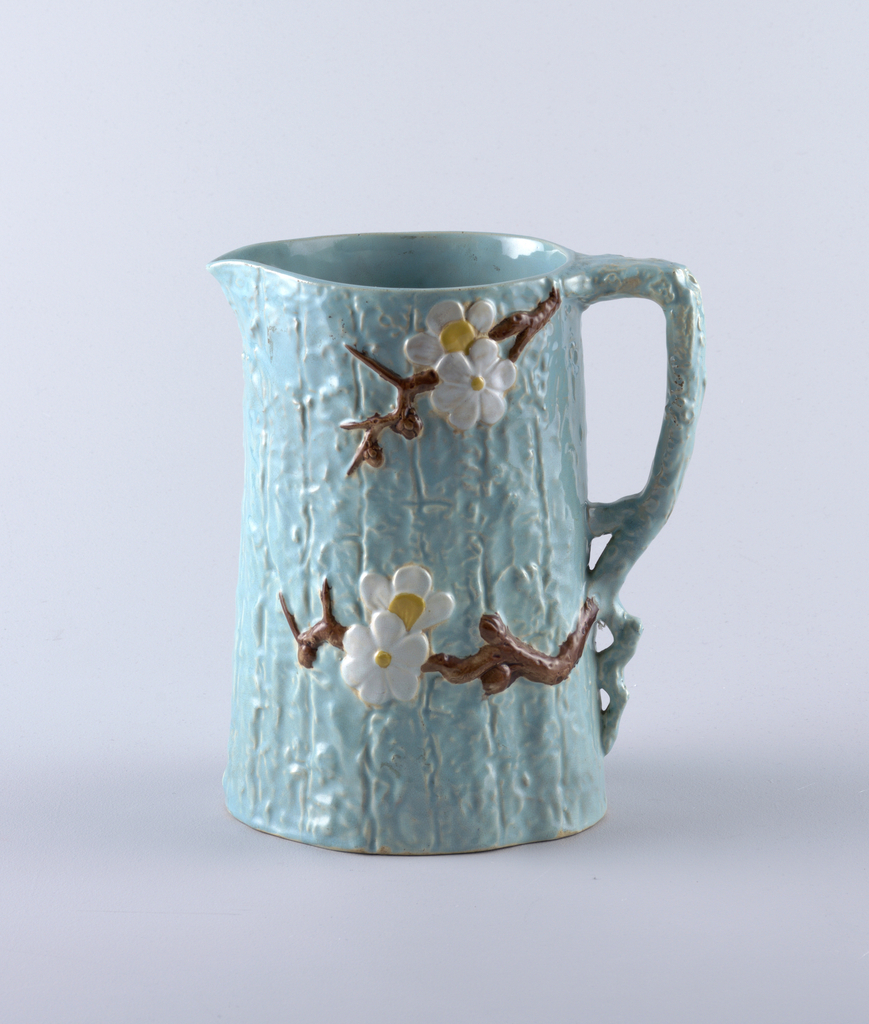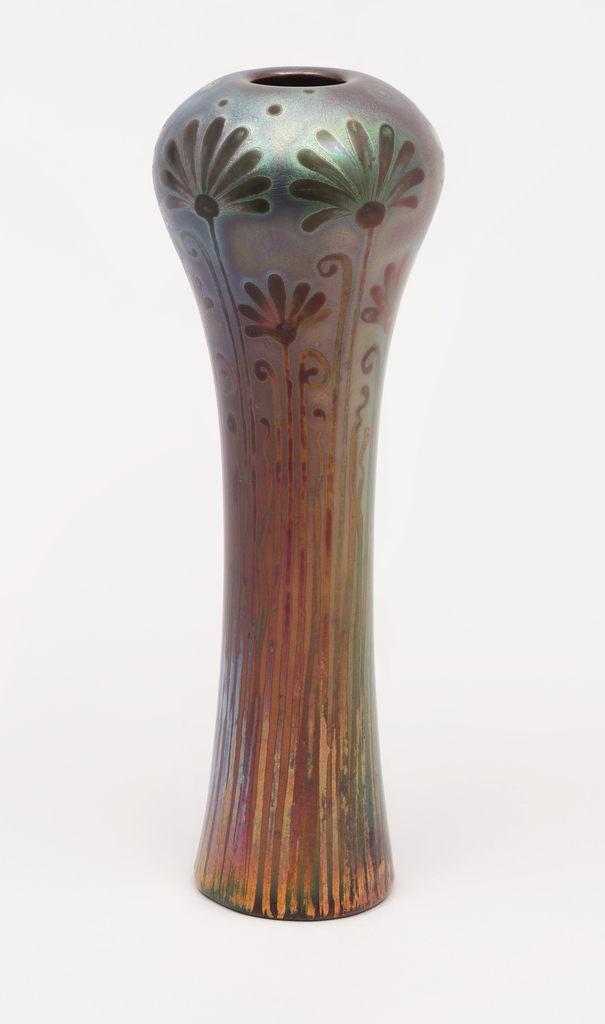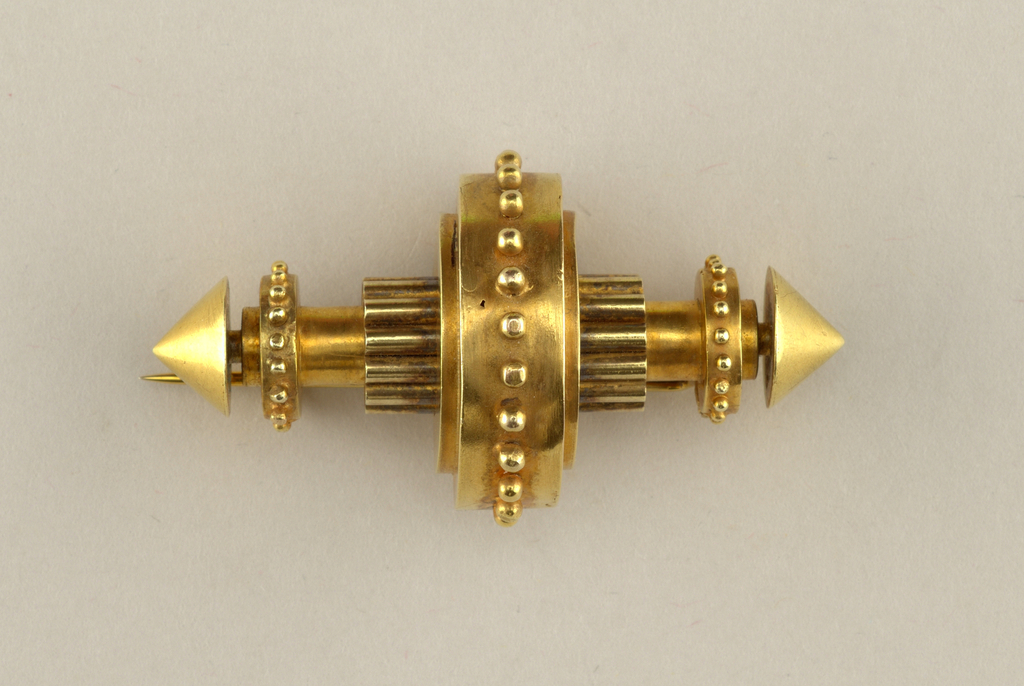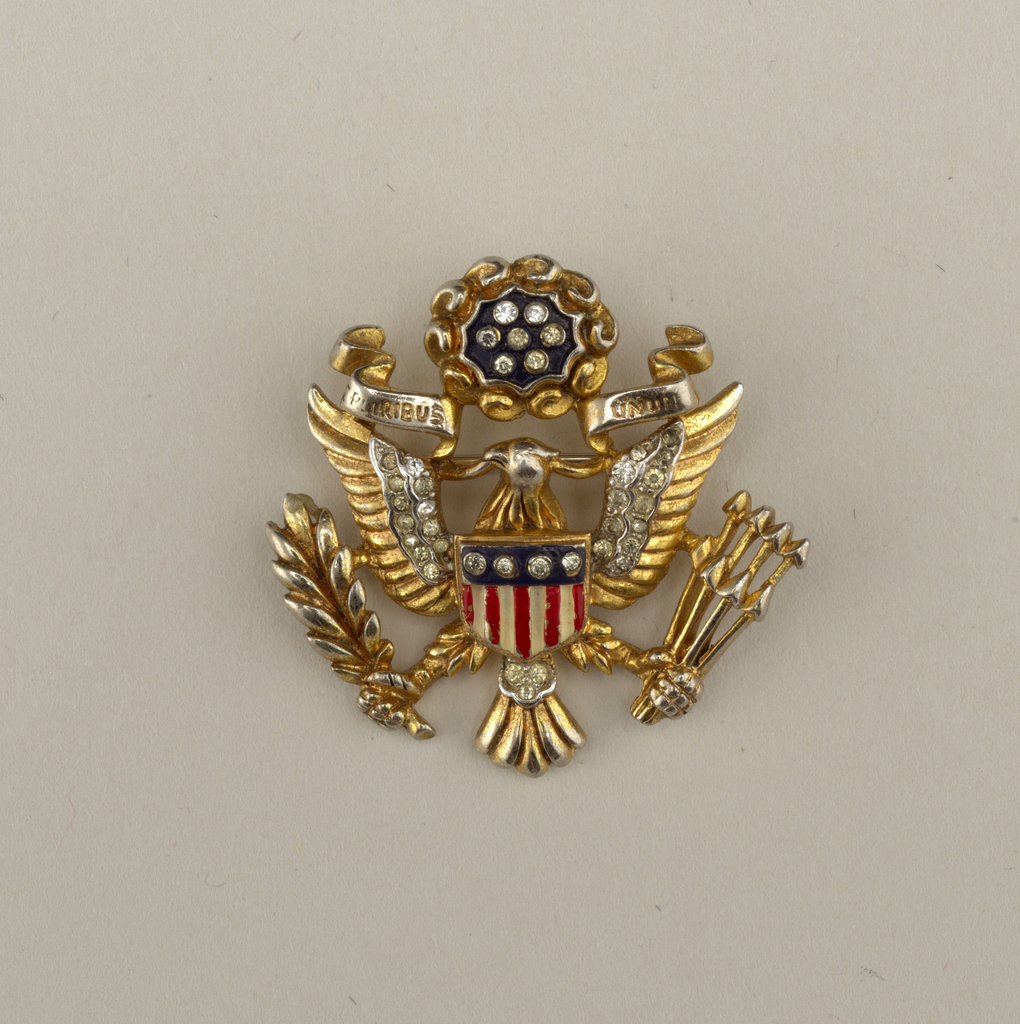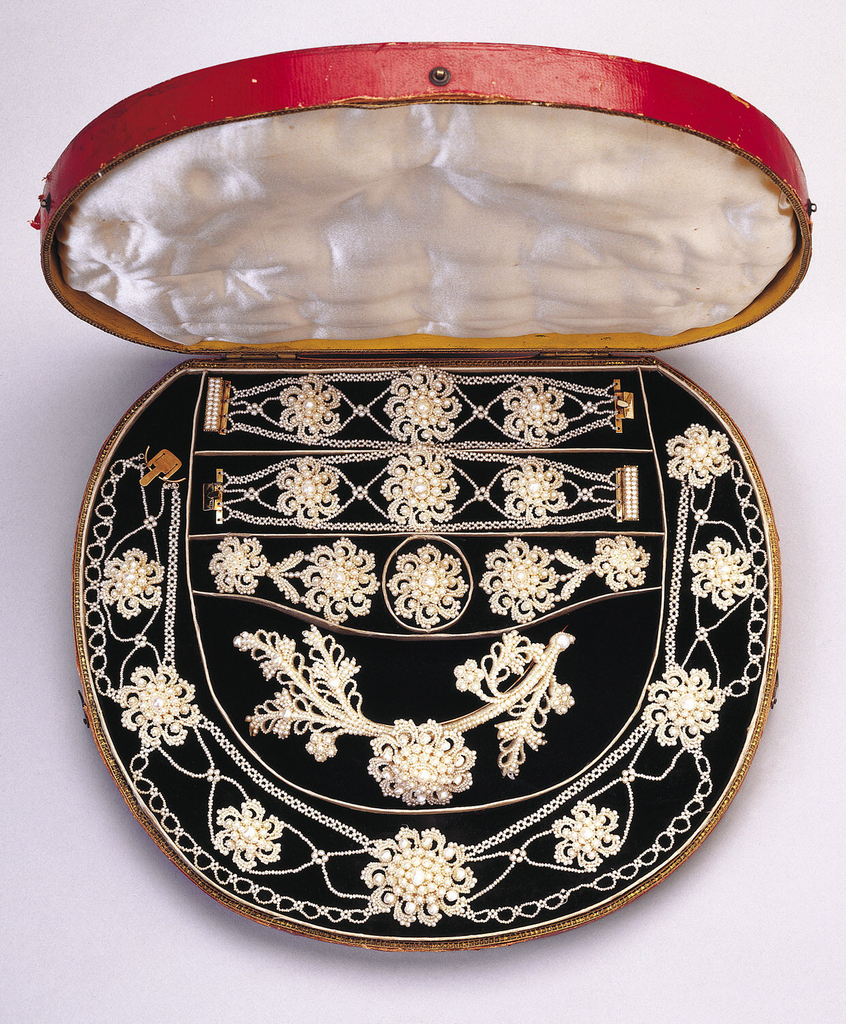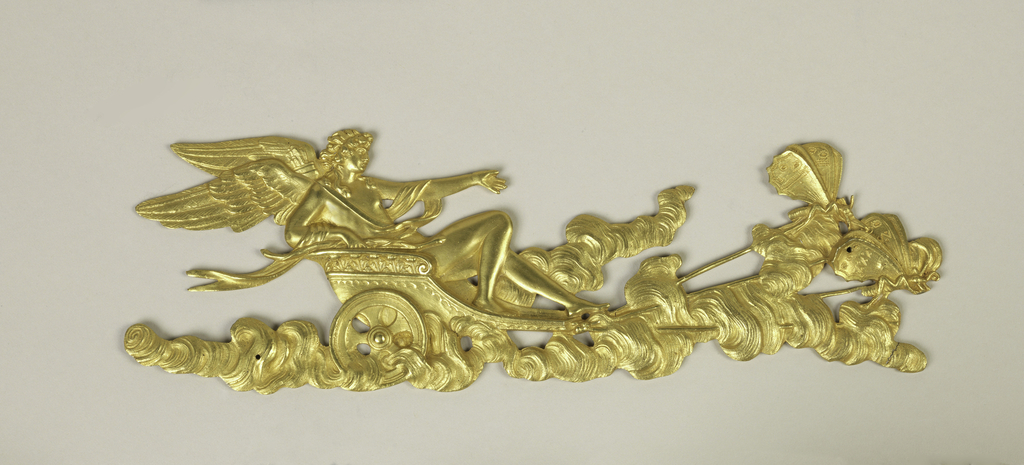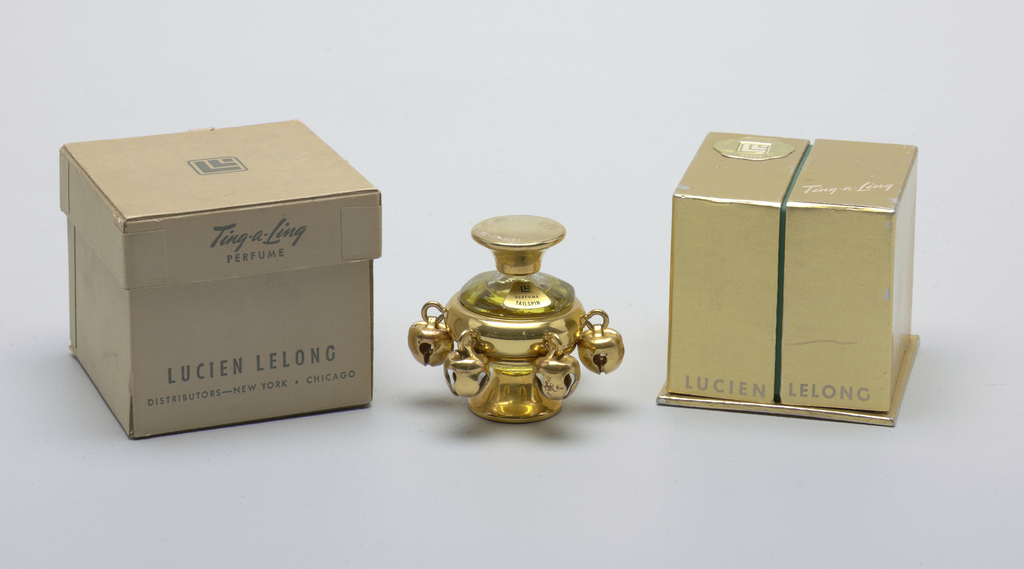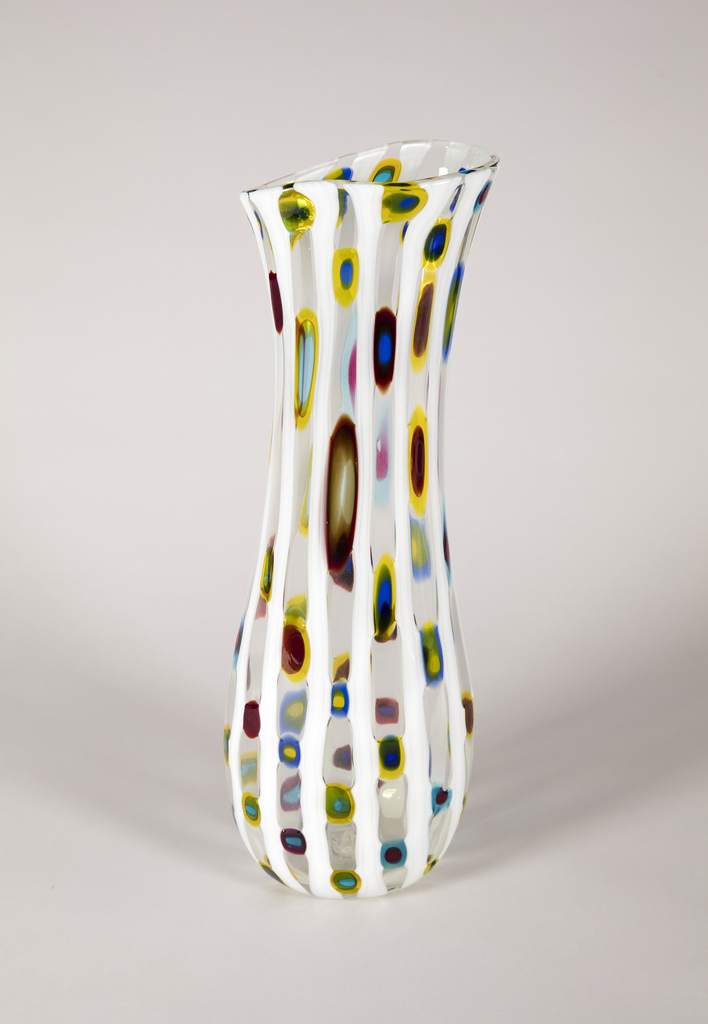Each of these iron fretwork bracelets is a wide, flexible, linked band comprised of three segments with a quatrefoil-and-foliate pattern alternating with rosettes, all rendered in the Gothic Revival style. Each large ornamental clasp, which is similar in design to the smaller elements, yet more detailed, serves as a focal point when the bracelet is...
Searching through the collection, looking for something different to write about, I came across this lovely ceramic pitcher which features an exterior molded to resemble a tree trunk, branches with blossoms, and a gnarled branch handle. It captured my interest because its motif and colors are particularly evocative of Vincent Van Gogh’s painting, The Almond...
To celebrate the opening of Iridescence, on view through March 24, 2019, Object of the Day this week will feature iridescent objects in the collection. This vase with its shimmering colors and fluid lines was designed by Jacques Sicard for the Weller Pottery between 1902 and 1907. It was created using gray-white clay and is...
This very modern looking gold brooch dates to the 1870s. Its geometric form is comprised of cylindrical elements and tiny rivet-like bosses (round knobs, studs, or other protuberances). The symmetrical structure features a central shaft with two sets of ten small cylinders bundled around the center. Encircling these is a large beaded band at the...
This U.S. insignia brooch by Trifari dates back to 1945, and is made from gilded metal and glass. Wearing a pin designed after the country’s seal was an opportunity for women to express their patriotism, especially in 1945, a time marked by victory in Europe and Japan. This brooch is part of a wider trend...
This set of seed pearl jewelry from the 1830s is referred to as a parure, essentially a matching suite of jewelry comprising interchangle pieces that expand the wearability of the set. A parure has three or more pieces: typically, a necklace, at least one pair of earrings, a brooch, bracelet, and in larger sets, a...
This is a gilt bronze furniture mount made in France, in about 1800. Highly decorative mounts like this one were important elements in interior and furniture design from the late seventeenth to the early nineteenth centuries. They were created by master artisans trained in a strict guild system which applied exacting standards to the fabrication...
This festive little perfume bottle embodies the creative genius of French couturier Lucien Lelong, active between 1919, when he opened his first couture house, and 1948, the year he retired. Lelong was influential in shaping the world of haute couture throughout much of the twentieth century. Among his contemporaries were Chanel, Worth, Patou, Lanvin and...
To celebrate the opening of Saturated: The Allure and Science of Color (May 11, 2018-January 13, 2019), Object of the Day this month will feature colorful objects from the exhibition. This vase by Anzolo Fuga, was created using clear glass (cristallo) which was decorated with vertical rods of opaque white glass (lattimo) and multi-colored murrine. Murrine are colored...
